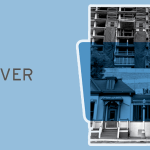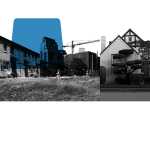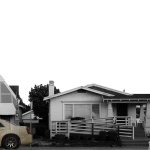The Denver Housing Authority (DHA) has long recognized the effects of housing on health. At DHA, we strive to provide our residents with a variety of programs, services, and opportunities for civic participation. As we redevelop housing sites, we continue to refine our practices and procedures. We aim to ensure people have homes that promote stability, community, and health.
It is a DHA best practice to involve the community in any redevelopment or revitalization project. Our process is driven by a belief that community-led redevelopment ensures the end product holistically addresses the needs of residents and fosters inclusion.
We want to create places where people want to live. One project, in particular, truly embodies this approach.
In 2009, DHA began working on a HOPE VI redevelopment of a 270-unit public housing development in the South Lincoln neighborhood of Denver. The redevelopment, which is known as Mariposa, has occurred in phases. Ultimately, there will be 9 phases of development; the project is currently in phase 7.
In each phase, a mixed-income housing development with commercial space is constructed. The result will be a complex of buildings that house close to 1000 tenants in public-housing, tax-credit, and market-rate units. The Mariposa project also includes retail and office space for both market-rate tenants and community partners that offer direct services to the community. Mariposa is a transit-oriented development, with convenient access to buses and the light rail.
As part of redevelopment, residents participated in planning processes before and during design and construction. With the help of a health impact assessment, which we completed in 2010, we identified a set of quantifiable indicators to measure health outcomes.
These indicators became part of our healthy living index (HLI), which we based on San Francisco’s Healthy Development Measurement Tool. The indicators — the HLI metrics — helped measure physical and mental health at the individual and community levels. They stemmed from the understanding that the built environment influences how long, and how well, we live.
Residents told us they did not want to leave the neighborhood or be relocated during construction, so we designed and implemented a phased redevelopment to help people stay in their community.
The HLI resulted in the Mariposa Healthy Living Tool, a step-by-step resource to guide DHA’s health initiatives and inform the agency’s future design and development decisions.
The Mariposa Healthy Living Initiative, which established the metrics, was used to determine how redevelopment actions change residents’ quality of life. We used the HLI metrics to develop “campaigns for action,” which pushed for a health lens to be applied to the Mariposa decisionmaking and implementation processes.
Between 2010 and 2011, we gathered input from the individuals and families who live and work in the neighborhood. And with their guidance, we prioritized health and stability.
Residents told us they did not want to leave the neighborhood or be relocated during construction, so we designed and implemented a phased redevelopment to help people stay in their community. This allowed families to stay near their social networks and children to stay in their schools.
The Mariposa design process incorporated art, history, and health into project planning, funding, design, and implementation. Each phase features green space, community gardens, and art sculptures. There’s also design infrastructure such as wide, well-lit stairwells and sidewalks, to promote physical activity.
By 2012, the HLI indicators already showed several positive trends. In 2013, residents of Mariposa reported leading healthier, more active lives and feeling extremely proud of their new homes.
Quite often, these residents will move each year just to find the most affordable housing opportunity for their families.
Despite our measured success, we recognize that the impacts of our efforts are limited. Developments like Mariposa can’t provide affordable housing to all eligible people in Denver.
Over the past few years, Denver has experienced a significant population increase. But the supply of housing, especially affordable housing, has not kept pace with demand. Last year, when we opened our list for public and project-based Section 8 multifamily properties for two weeks, we had 14,000 interest cards. At the same time, our Section 8 housing choice voucher program accepted 21,000 interest cards over three days. In each program, only 650 to 700 units or vouchers were available. Although Denver has been producing approximately 18,000 new units of housing per year since 2013, the majority of new rentals are marketed as “luxury” units, which are not affordable to the average household. The result? The need for affordable housing has skyrocketed.
We know that housing stability and security have a profound effect on our health and well-being. Yet we see that residents who can’t find affordable housing in Denver are forced to move out of the city. They can’t live near where they work, and their commutes to and from their jobs are lengthy and expensive.
Quite often, these residents will move each year just to find the most affordable housing opportunity for their families. Many elderly residents, in particular, find themselves unable to pay market-rate rents, stay where they have lived for many years, or pay for necessary amenities as they age. Despite our redevelopment efforts, which work to maximize the number of affordable housing units in Denver, we see an ever-growing need for safe, stable, and affordable housing.
By Angela Fletcher, Annie Hancock, Bob Prettyman, Lynne Picard, Renee Nicolosi, and Shaina Burkett


